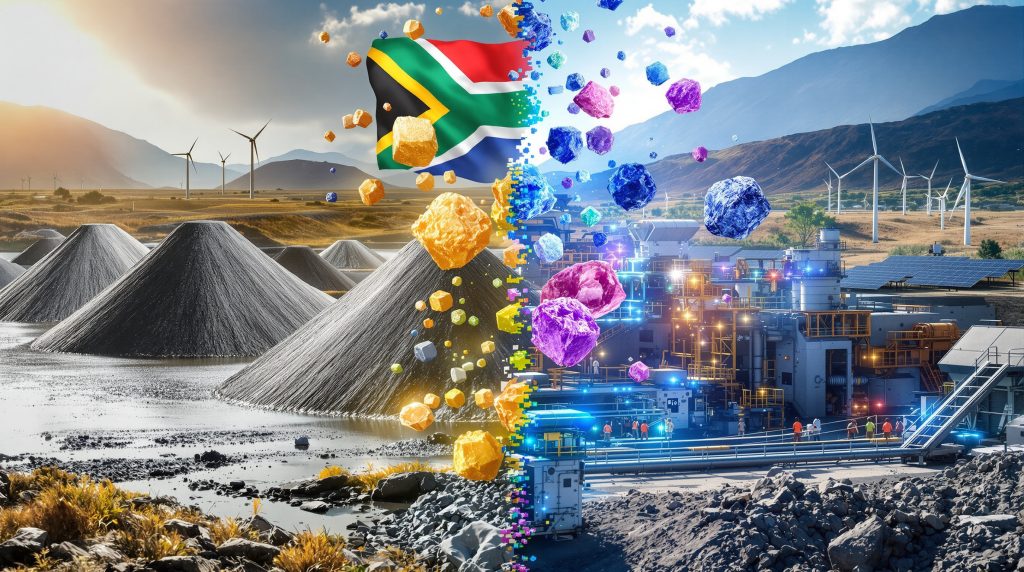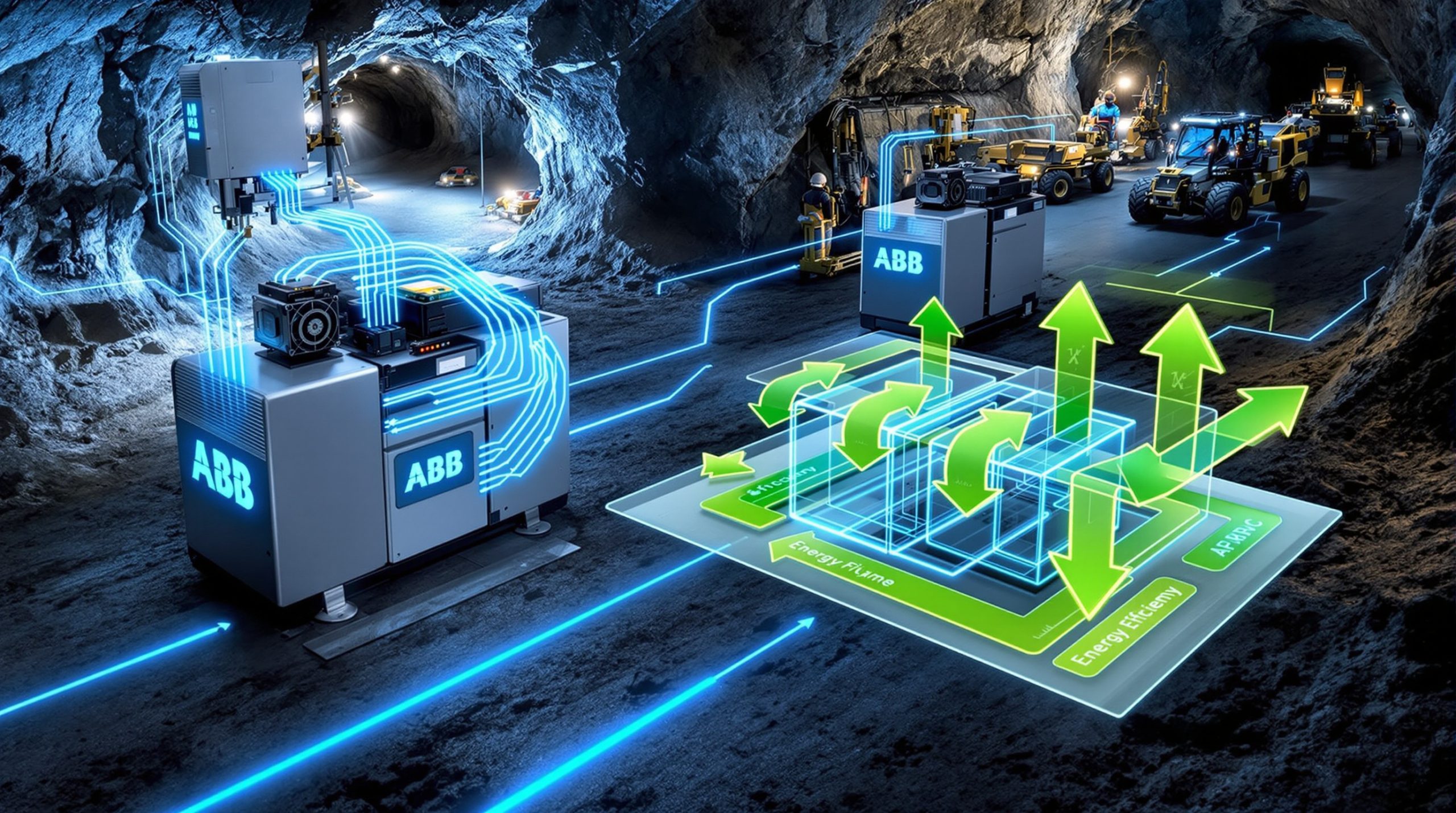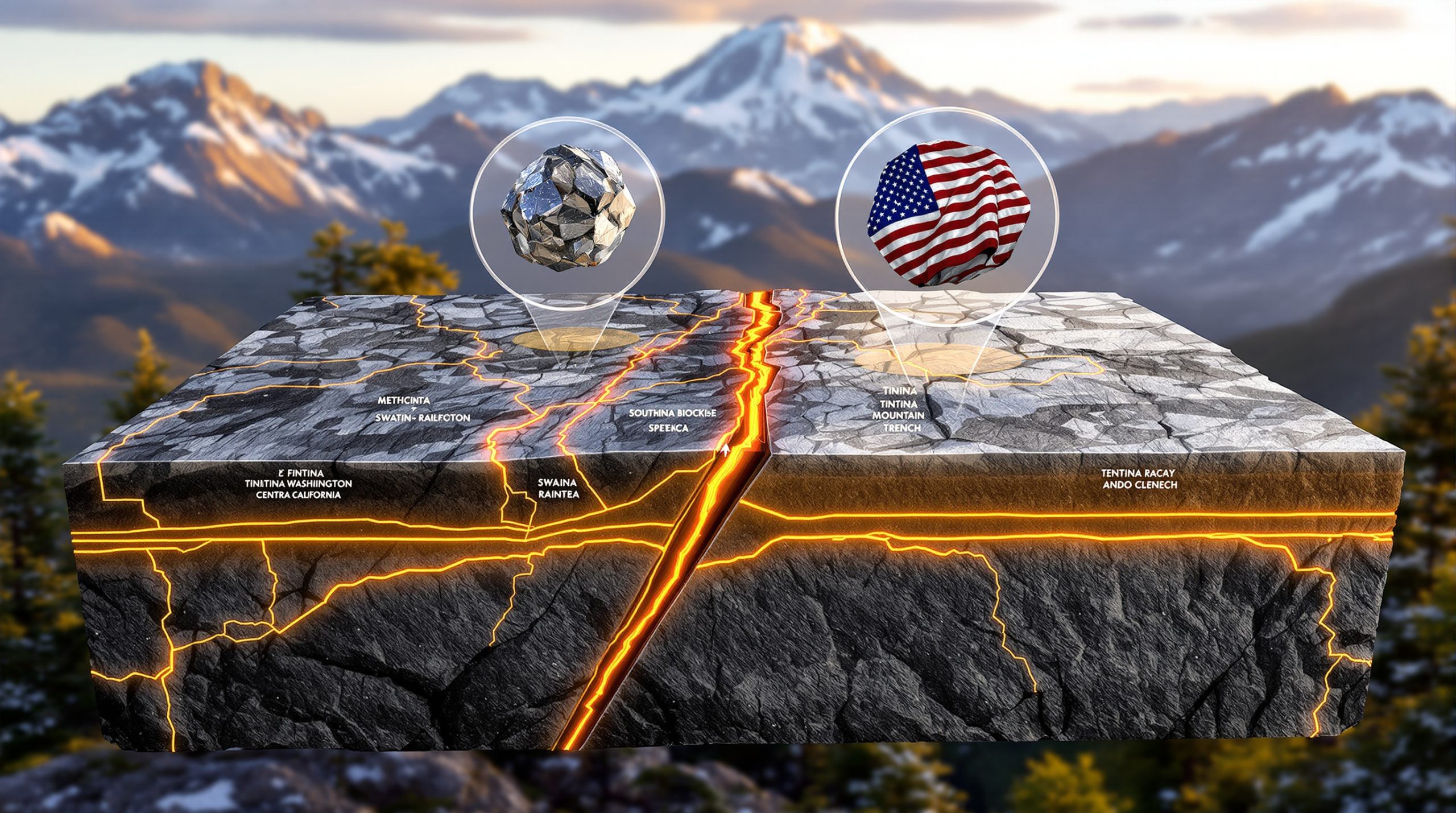What Are Rare Earth Elements and Why Are They Important?
Rare earth elements (REEs) are a group of metallic elements crucial for modern technology, particularly in the green energy transition. Despite their name, REEs are relatively abundant in the Earth's crust but rarely found in concentrated, economically viable deposits. Africa holds approximately 15% of the world's rare earth elements, making it a significant player in the global supply chain.
These elements have become increasingly important as they form essential components in various technologies driving the sustainable energy revolution. According to Jane Marsh, Editor-in-Chief at Environment.co, "rare earth elements are critical for many eco-friendly devices, such as solar panels and electric vehicle batteries" (Global Mining Review, September 11, 2025).
Critical Applications of Rare Earth Elements
-
Renewable Energy Technologies: REEs are essential components in wind turbines and solar panels, enabling the efficient conversion of natural energy into electricity.
-
Electric Vehicle Production: These elements are critical in high-performance batteries and motors, allowing for the development of more efficient and powerful electric vehicles.
-
Electronics Manufacturing: Modern smartphones, computers, and other consumer electronics rely heavily on rare earth elements for their functionality and performance.
-
Defense Applications: Military technologies including radar systems, guidance systems, and other critical defense infrastructure depend on rare earth elements.
The Environmental Paradox of Rare Earth Mining
Traditional rare earth mining creates a significant environmental footprint that contradicts the "green" label of the technologies they enable:
-
Land Disturbance: Conventional mining operations cause extensive land disturbance and destruction of natural habitats.
-
Water Issues: The process consumes vast quantities of water and carries high risks of contamination.
-
Energy Consumption: Processing rare earth ore is notoriously energy-intensive, often relying on fossil fuels.
-
Toxic Waste: The extraction and refinement processes generate substantial amounts of toxic waste and radioactive byproducts.
How Serious is Africa's Rare Earth Mining Challenge?
Africa's rare earth mining sector faces considerable environmental and social challenges. According to the Global Mining Review (September 11, 2025), the continent holds 15% of the world's REEs, making sustainable management of these resources crucial for both regional development and global supply chains.
Environmental Impacts in South African Mining
Jane Marsh notes that "rampant REE mining has expedited the elimination of Africa's biodiversity" (Global Mining Review, September 11, 2025). This alarming trend manifests in several ways:
-
Biodiversity Loss: Mining operations in ecologically sensitive areas have accelerated the destruction of unique ecosystems.
-
Water Contamination: Unlined waste storage facilities allow harmful substances to leach into groundwater systems.
-
Acid Mine Drainage: The chemical processes involved in mining rare earths sustainably in South Africa create acidic runoff that damages local water systems.
-
Land Degradation: Large-scale operations leave behind degraded landscapes and contaminated soil that can take decades to rehabilitate.
Social and Economic Challenges
The human impact of unsustainable mining practices extends beyond environmental damage:
-
Community Displacement: Mining operations have frequently displaced local populations from their traditional lands without adequate compensation.
-
Worker Safety Concerns: The Global Mining Review (September 11, 2025) reports that mining companies have employed "dangerous work practices" that put miners at risk.
-
Inequitable Economic Benefits: The financial advantages of mining often fail to reach the communities most affected by operations.
-
Regulatory Challenges: Inconsistent or inadequate regulations have historically made compliance difficult and enforcement problematic.
What Regulatory Changes Are Transforming South Africa's Mining Sector?
The 2025 Mineral Resources Development Bill (MRDB) represents a watershed moment in South Africa's approach to mining governance, with particular implications for the rare earth sector.
Key Provisions of the MRDB
According to the Global Mining Review (September 11, 2025), the MRDB aims to "tighten up South Africa's mining industry" through several key mechanisms:
-
Comprehensive Waste Management: The legislation provides detailed regulations for managing mine tailings and closures.
-
Global Standards Alignment: The bill aligns South African mining practices with international environmental standards and targets.
-
Financial Support for Rehabilitation: The MRDB establishes financial resources specifically for environmental rehabilitation efforts.
-
Recognition of Small-Scale Mining: The official acknowledgment of small-scale mines allows these operations to participate more fully in the market alongside larger players.
Enforcement and Compliance Mechanisms
The effectiveness of the MRDB depends on robust enforcement capabilities:
-
Enhanced Monitoring: The bill establishes closer monitoring of large mining operations to ensure regulatory compliance.
-
Regulatory Clarity: The legislation helps "eliminate any confusion on compliance" (Global Mining Review, September 11, 2025).
-
Technology Investment Incentives: The regulatory framework may necessitate investments in new technologies to meet environmental standards.
-
Market Alignment: The MRDB helps coordinate South Africa's mining sector with "customer and investor expectations for eco-consciousness" (Global Mining Review, September 11, 2025).
How Is South Africa Pioneering Sustainable Rare Earth Extraction?
South Africa is emerging as a leader in mining rare earths sustainably in South Africa through innovative approaches that transform environmental liabilities into economic opportunities.
The Phosphogypsum Recovery Breakthrough
A Johannesburg laboratory has developed a groundbreaking method to extract rare earth elements from phosphogypsum stacks—waste byproducts from phosphoric acid production that have historically been treated as worthless material.
According to the Global Mining Review (September 11, 2025), Rainbow Rare Earth's in-house laboratory has achieved remarkable results:
-
Recovery Rate: The process achieves up to 65% REE recovery from phosphogypsum waste.
-
Process Efficiency: This method eliminates the extended timeframes associated with conventional mining.
-
Safety Improvements: The recovery process significantly reduces crew exposure to hazardous conditions.
-
Economic Viability: The approach substantially lowers operational costs compared to traditional mining methods.
Case Study: The Phalaborwa Rehabilitation Project
Project Background
The Phalaborwa site in Limpopo province exemplifies the environmental challenges facing South Africa's mining sector:
-
Long Industrial History: The site has operated as a phosphate-fertilizer facility since 1964.
-
Multiple Ownership Changes: Three different enterprises have owned the facility throughout its operational history.
-
Environmental Legacy: Decades of operation created substantial phosphogypsum waste stacks.
-
Groundwater Issues: Rainbow CEO George Bennett noted that "insufficiency in regulations meant the phosphogypsum stacks were unlined and allowed to contaminate the groundwater" (Global Mining Review, September 11, 2025).
Rainbow Rare Earth's Innovative Approach
In 2020, Rainbow Rare Earth signed an agreement with Bosveld Phosphates to transform the Phalaborwa site through a comprehensive rehabilitation strategy:
-
Waste Reprocessing: The company is reprocessing phosphogypsum stacks to extract valuable REEs.
-
Regulatory Compliance: Materials are being restacked in accordance with current environmental regulations.
-
Water Treatment: Crews are neutralizing acidic water created by the phosphogypsum.
-
Closed Water System: The neutralized water is being used for processing needs, eliminating the requirement for external sources.
-
Byproduct Commercialization: Rainbow plans to sell clean gypsum byproducts, enabling the complete restoration of Phalaborwa to its natural state.
What Technologies Are Enabling Sustainable Rare Earth Mining?
The transition to sustainable rare earth mining in South Africa relies on several innovative technologies and approaches that minimize environmental impact while maximizing resource recovery.
Advanced Extraction Methodologies
While conventional mining involves extensive excavation and processing of raw ore, sustainable approaches focus on more efficient and less invasive techniques:
-
Phosphogypsum Extraction: The rare earth breakthrough developed in Johannesburg demonstrates how previously discarded materials can become valuable resource sources.
-
Selective Processing: Advanced techniques allow for more targeted extraction of specific rare earth elements without extensive processing of surrounding materials.
-
Precision Mining: Technologies that enable more precise identification and extraction of rare earth deposits minimize unnecessary disturbance.
-
Low-Impact Separation: Modern separation technologies reduce the chemical intensity of traditional rare earth processing.
Waste Management Innovations
Sustainable rare earth mining depends heavily on responsible waste management:
-
Lined Storage Systems: Rainbow's approach at Phalaborwa includes properly lined storage facilities that prevent leachate from entering groundwater.
-
Water Recycling: The company's use of neutralized acidic water for processing demonstrates the potential for closed-loop water systems.
-
Neutralization Processes: Technologies that convert acidic or otherwise harmful waste streams into environmentally benign materials.
-
Byproduct Valorization: Rainbow's plan to market clean gypsum represents the potential to find commercial applications for processing residues.
What Are the Economic Benefits of Sustainable Rare Earth Mining?
Sustainable rare earth mining presents significant economic opportunities beyond environmental benefits, creating a compelling business case for adoption.
Market Positioning Advantages
The Global Mining Review (September 11, 2025) notes that "tackling environmental issues cost-effectively is crucial for market success, shareholder interest, and a good reputation." This suggests several key advantages:
-
Regulatory Compliance: Meeting and exceeding environmental standards reduces legal risks and potential penalties.
-
Investor Appeal: As environmental, social, and governance (ESG) factors become increasingly important to investors, sustainable operations attract more capital.
-
Consumer Preference: End-users of technologies containing rare earth elements increasingly demand responsibly sourced materials.
-
Supply Chain Security: Sustainable practices reduce the risk of operational disruptions due to environmental incidents or community conflicts.
Cost Reduction Opportunities
Beyond market positioning, sustainable rare earth mining offers tangible financial benefits:
-
Waste Stream Monetization: Rainbow's approach of extracting value from waste demonstrates how "waste" materials can become revenue sources.
-
Operational Efficiencies: More precise extraction and processing technologies can reduce energy, water, and chemical inputs.
-
Reduced Remediation Costs: Proactive environmental management reduces the long-term costs associated with site cleanup and mine reclamation innovations.
-
Circular Economy Benefits: Reprocessing existing waste materials eliminates many costs associated with traditional mining, including exploration, excavation, and primary crushing.
How Does South Africa's Approach Compare to Global Rare Earth Mining Practices?
South Africa's emerging model of sustainable rare earth mining represents a significant departure from dominant global practices, potentially establishing new standards for the industry worldwide.
Comparison with Traditional Mining Approaches
The waste-to-wealth approach being pioneered in South Africa differs fundamentally from conventional rare earth mining in several key aspects:
-
Resource Source: Rather than extracting rare earths from primary geological deposits, South Africa's approach focuses on recovering these elements from industrial waste.
-
Environmental Footprint: While traditional mining creates new environmental disturbances, the South African model actively remediates existing environmental problems.
-
Water Management: Conventional operations typically consume large quantities of fresh water, whereas Rainbow's approach at Phalaborwa uses reclaimed contaminated water.
-
Waste Generation: Traditional mining produces new waste tailings, while South Africa's model reduces existing waste stockpiles.
Global Leadership Potential
According to Jane Marsh, South Africa's initiatives represent "only the beginning," suggesting significant potential for global influence:
-
Model for Other Regions: The approach being developed in South Africa could serve as a template for other countries with similar legacy mining sites.
-
Technology Transfer: Innovations in waste reprocessing and resource recovery could be exported to other mining regions globally.
-
Standards Development: South Africa's practices could inform the development of international standards for sustainable rare earth production.
-
Market Differentiation: Successfully implementing sustainable practices could position South Africa as a preferred supplier of responsibly sourced rare earth elements.
What Challenges Remain for Sustainable Rare Earth Mining?
Despite promising developments, several challenges must be addressed to fully realize the potential of sustainable rare earth mining in South Africa.
Technical Challenges
The transition from conventional to sustainable mining practices faces several technical hurdles:
-
Process Optimization: While Rainbow has achieved 65% recovery rates in laboratory settings, maintaining this efficiency at industrial scale may prove challenging.
-
Complex Separation: Rare earth elements are chemically similar, making their separation technically difficult and potentially energy-intensive.
-
Contaminant Management: Processing waste materials may introduce additional challenges related to handling contaminants not typically present in primary ores.
-
Technology Integration: Combining multiple innovative approaches into cohesive, efficient systems requires significant engineering expertise.
Market and Economic Challenges
The Global Mining Review (September 11, 2025) suggests that the MRDB may "necessitate investments in new technologies," highlighting financial challenges:
-
Investment Requirements: Developing and implementing sustainable technologies requires significant upfront capital.
-
Market Acceptance: Convincing buyers to purchase rare earth elements recovered from waste materials may require education and quality assurance.
-
Price Competition: Sustainable operations must remain price-competitive with traditional suppliers, including those with lower environmental standards.
-
Value Chain Development: Building local capacity for downstream processing presents additional challenges beyond primary resource recovery.
What Does the Future Hold for Rare Earth Mining in South Africa?
The trajectory of South Africa's rare earth sector suggests several important developments in the coming years, with potential global implications.
Near-Term Developments
Based on current initiatives and regulatory directions, several developments appear likely:
-
Expansion of Waste Recovery: The success of the Phalaborwa project could lead to similar initiatives at other legacy mining sites across South Africa.
-
Technology Refinement: Continued improvement of extraction and processing technologies to increase efficiency and reduce costs.
-
Regulatory Implementation: Full implementation of the MRDB will further shape industry practices and standards.
-
Industry Consolidation: As sustainable practices become standardized, companies lacking the capacity to adapt may exit the market or be acquired.
Long-Term Vision
The Global Mining Review (September 11, 2025) positions South Africa's approach as a model that other countries can follow, suggesting a broader long-term vision:
-
Circular Economy Hub: South Africa could establish itself as a center for circular economy approaches to mining and resource recovery.
-
Environmental Rehabilitation: Complete remediation of legacy mining sites while extracting economic value.
-
Value Chain Development: Growth of downstream processing capabilities to capture additional value from recovered rare earth elements.
-
Knowledge Leadership: Development of expertise and technologies that can be exported globally to other mining regions.
How Can Other Countries Learn from South Africa's Example?
The innovations in South Africa's rare earth mining sector offer valuable lessons for other mining regions globally, potentially catalyzing wider industry transformation.
Transferable Strategies
According to Jane Marsh, "mining decision-makers can look for similar opportunities to clean up their local REE industry to follow in the country's footsteps" (Global Mining Review, September 11, 2025). Several approaches appear particularly transferable:
-
Waste Revaluation: Reassessing "waste" materials for valuable resource content using advanced analytics and processing technologies.
-
Rehabilitation Integration: Combining site rehabilitation with resource recovery to create economic drivers for environmental remediation.
-
Regulatory Modernization: Updating mining codes to incentivize sustainable practices while maintaining economic viability.
-
Stakeholder Collaboration: Bringing together government agencies, mining companies, and affected communities to develop balanced approaches.
Implementation Considerations
Countries seeking to adapt South Africa's approaches should consider several key factors:
-
Resource Assessment: Conducting thorough assessments of existing waste materials to identify resource recovery potential.
-
Technology Adaptation: Tailoring extraction and processing technologies to local geological and environmental conditions.
-
Regulatory Framework: Developing appropriate regulatory structures that both support and incentivize South Africa beneficiation and sustainable practices.
-
Capacity Building: Investing in local technical knowledge and infrastructure to support new approaches to resource recovery.
FAQ: Sustainable Rare Earth Mining in South Africa
What makes South Africa's approach to rare earth mining unique?
South Africa is pioneering the extraction of rare earth elements from waste materials rather than traditional mining, focusing on phosphogypsum stacks that were previously considered worthless but environmentally harmful waste products.
How does sustainable rare earth mining benefit local communities?
Sustainable mining practices reduce environmental contamination, create skilled employment opportunities, rehabilitate damaged landscapes, and potentially provide more stable long-term economic benefits compared to conventional mining operations.
Are sustainably mined rare earths more expensive?
Initially, some sustainable mining technologies may have higher capital costs, but operational expenses are often lower due to reduced waste management requirements and environmental compliance costs. Additionally, increasingly environmentally conscious markets may pay premium prices for responsibly sourced materials.
How significant are South Africa's rare earth resources globally?
Africa as a whole holds approximately 15% of global rare earth resources, with South Africa possessing significant deposits. The country's innovative approach to extraction from waste materials further expands its effective resource base beyond traditional ore deposits.
What role does the government play in sustainable rare earth mining?
The South African government has implemented the Mineral Resources Development Bill (2025), which provides regulatory frameworks for environmental management, financial mechanisms for rehabilitation, and incentives for mining industry innovation while recognizing both large and small-scale operations.
Ready to Spot the Next Major Mineral Discovery?
Discover why historic mineral discoveries can generate substantial returns by exploring Discovery Alert's dedicated discoveries page, where our proprietary Discovery IQ model delivers real-time alerts on significant ASX mineral announcements, turning complex data into actionable insights. Begin your 30-day free trial today at https://discoveryalert.com.au/discoveries/ to position yourself ahead of the market.




